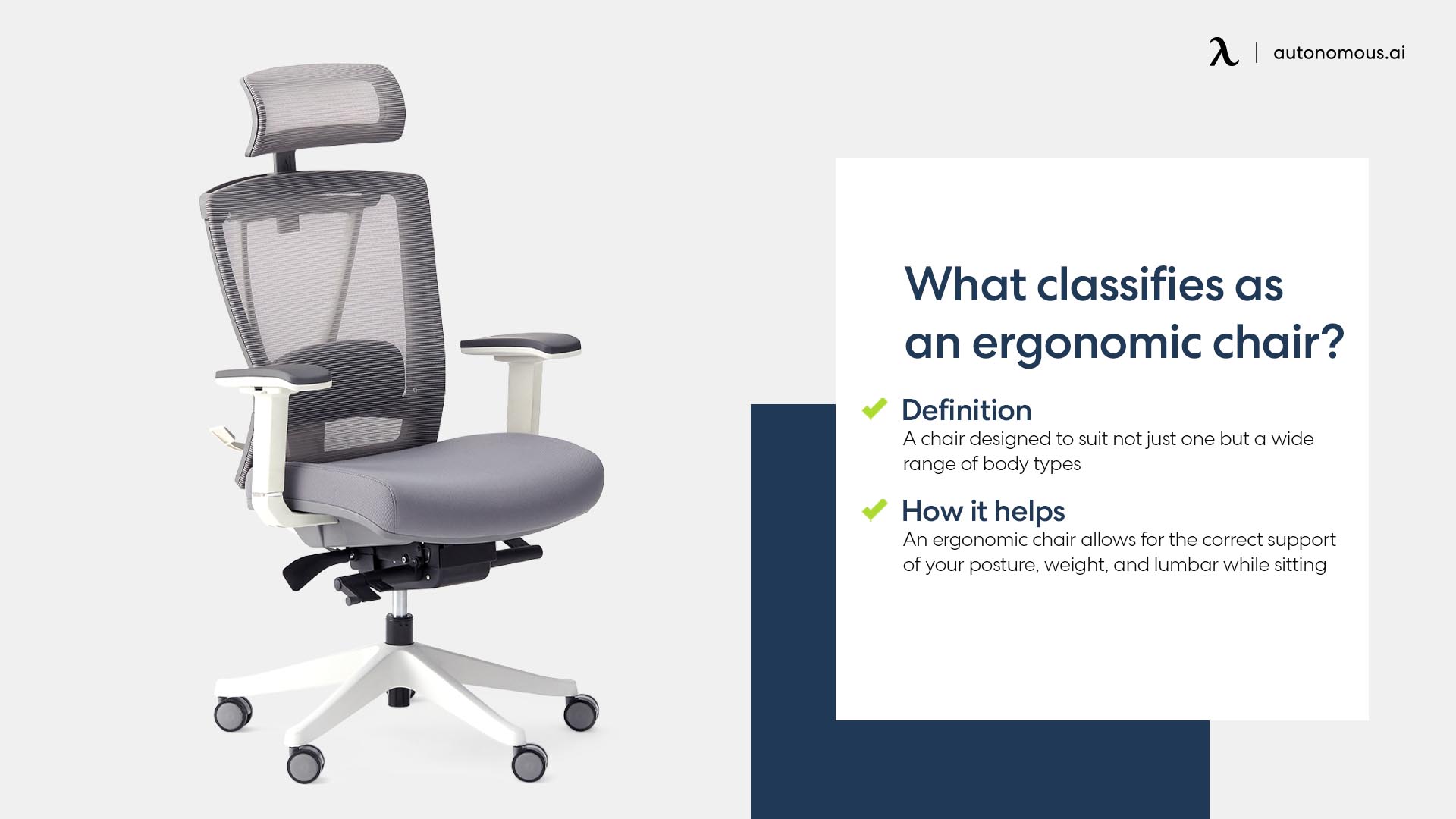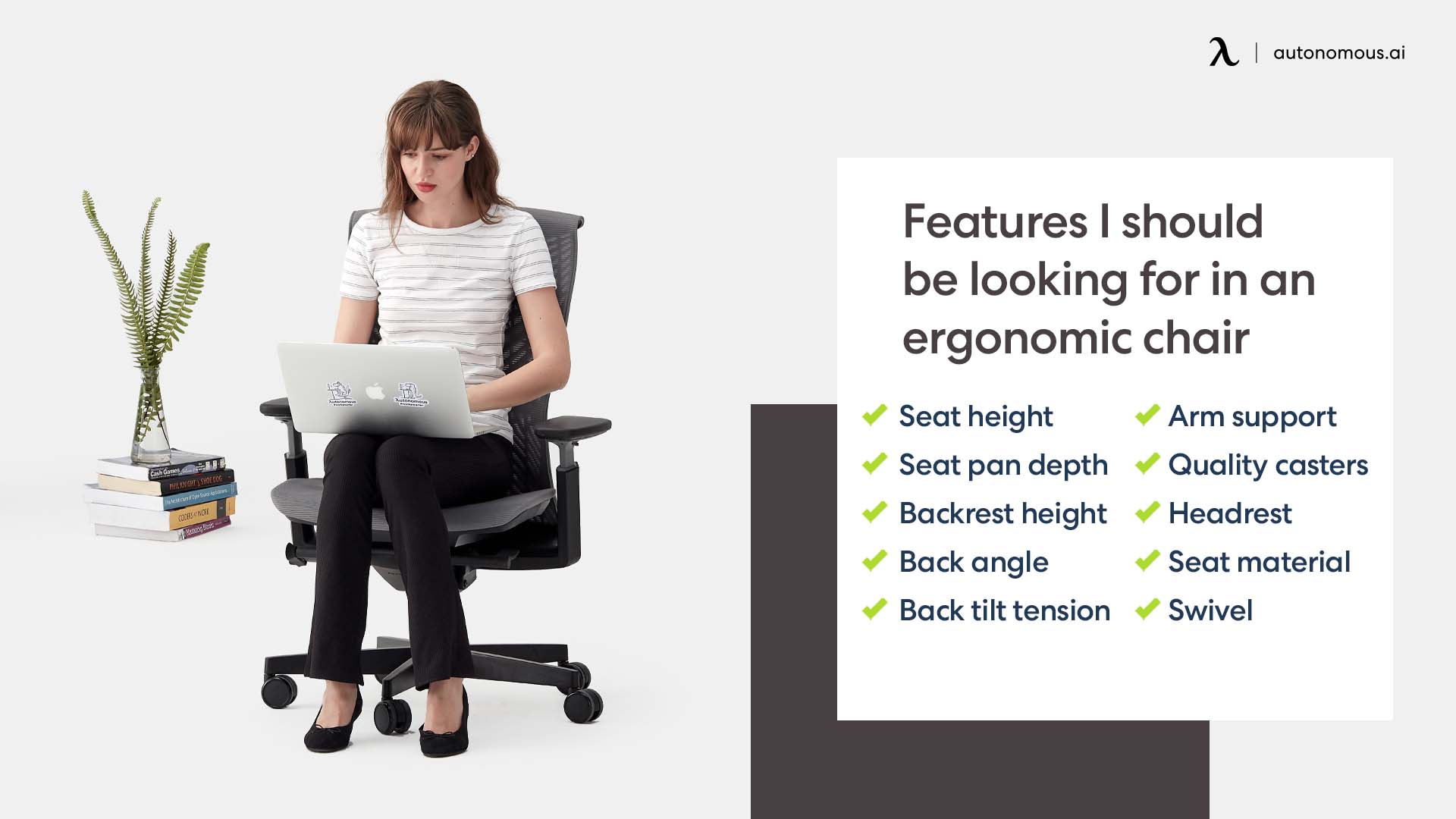Essential Ergonomic Features: What Features Will Make A Desk Chair Ergonomic

The pursuit of ergonomic perfection in a desk chair is a journey towards optimizing comfort, posture, and ultimately, productivity. A chair that fails to support the body’s natural alignment is not merely uncomfortable; it’s a breeding ground for aches, pains, and long-term health issues. The following features are not mere luxuries, but rather essential pillars upon which a truly ergonomic chair is built.
Adjustable Lumbar Support, What features will make a desk chair ergonomic
Lumbar support is the unsung hero of ergonomic seating. This crucial feature targets the lower back, the region most susceptible to strain from prolonged sitting. Proper lumbar support maintains the natural inward curve of the spine, preventing slouching and reducing pressure on the intervertebral discs. Adjustment mechanisms vary; some chairs offer simple height adjustments via a lever or knob, while others provide more sophisticated controls, allowing for both height and depth modifications to perfectly cradle the curvature of the individual’s back. Imagine the difference between a supportive embrace and a cold, unyielding surface—the former promotes healthy posture, while the latter invites discomfort and potential injury. Examples include lever-operated mechanisms that allow for easy height adjustment, or more advanced systems that combine height and depth adjustments for a personalized fit.
Seat Height Adjustment and its Impact
Seat height adjustment is paramount for achieving a neutral posture. A chair that doesn’t allow for proper leg and foot placement forces the body into unnatural positions, leading to strain on the back, neck, and shoulders. The optimal height allows for the feet to rest flat on the floor, with the thighs parallel to the ground and a 90-degree angle at the knees and hips. Failure to achieve this ideal posture can result in reduced blood flow, discomfort, and a significant decrease in productivity.
| Adjustment Method | Mechanism | Advantages | Disadvantages |
|---|---|---|---|
| Hydraulic | Uses a hydraulic cylinder for smooth, precise adjustment. | Smooth, precise adjustment; durable; wide range of adjustment. | Can be more expensive; potential for leaks. |
| Pneumatic | Uses compressed air for adjustment. | Relatively inexpensive; easy to adjust. | Less precise adjustment than hydraulic; potential for air leaks; may not be as durable. |
| Manual | Uses a threaded mechanism or lever for adjustment. | Simple, reliable; inexpensive. | Can be less precise; requires more effort to adjust. |
| Gas Lift | A common type of pneumatic adjustment. | Generally smooth and precise; relatively inexpensive. | Similar disadvantages to pneumatic systems; susceptibility to wear and tear over time. |
The Role of Armrests in Posture and Strain Reduction
Armrests are often overlooked, yet they play a critical role in maintaining proper posture and minimizing strain. Properly positioned armrests support the arms and shoulders, reducing pressure on the neck and upper back. The height, width, and adjustability of the armrests are crucial. Fixed armrests, while inexpensive, may not be suitable for all users. Adjustable armrests allow for customization to individual body types and preferences. Consider the difference between a rigid, unforgiving armrest and one that conforms to your body’s natural shape. The latter reduces strain and encourages a more relaxed posture. Examples of armrest styles include padded armrests for comfort, adjustable height armrests for versatility, and 3D adjustable armrests offering full control over position.
Breathable and Supportive Seat Material
The seat material is the foundation of your seated experience. A breathable material prevents overheating and perspiration, crucial for long periods of sitting. Supportive materials maintain their shape over time, providing consistent comfort and support. Materials like mesh, breathable fabrics, and high-density foam offer optimal breathability and support. Mesh allows for excellent air circulation, preventing the buildup of heat and moisture. High-density foam provides lasting support, resisting compression and maintaining its shape even after extended use. The difference between sitting on a breathable, supportive surface and a hot, sinking one is the difference between comfort and discomfort, between productivity and fatigue.
Advanced Ergonomic Considerations

Beyond the essential features, a truly ergonomic chair transcends mere comfort; it becomes an extension of the body, a silent partner in productivity and well-being. The subtle nuances of advanced ergonomic design are the difference between a comfortable seat and a throne of postural perfection. These finer points are crucial for those who spend extended hours seated, demanding a level of support and adjustability that elevates the chair beyond mere functionality.
What features will make a desk chair ergonomic – The pursuit of ergonomic excellence demands a meticulous attention to detail, going beyond the basic requirements to address the individual needs of the user. It is in these advanced considerations that the true power of ergonomic design is revealed.
Adjustable Seat Depth and Its Impact on Leg Circulation and Comfort
The often-overlooked adjustable seat depth is a cornerstone of advanced ergonomic design. Imagine a chair that cradles your thighs perfectly, preventing pressure points and promoting optimal blood flow. This is the promise of adjustable seat depth, a feature that directly impacts leg circulation and overall comfort. Improper seat depth can lead to discomfort, numbness, and even circulatory issues. A properly adjusted seat allows for a natural angle at the knees and hips, reducing strain and promoting healthy posture.
- Improved blood circulation in the legs and feet, reducing the risk of numbness and discomfort.
- Enhanced comfort through optimal thigh support, preventing pressure points and reducing fatigue.
- Improved posture by supporting the natural angle of the hips and knees.
- Reduced strain on the lower back and legs.
- Increased productivity by minimizing distractions caused by discomfort.
Comparison of Chair Back Designs
The chair back, a seemingly simple element, plays a pivotal role in spinal support and posture. Different designs cater to diverse needs and preferences, each with its own strengths and weaknesses. Understanding these distinctions is crucial in selecting a chair that perfectly complements your body and work style.
| Chair Back Design | Advantages | Disadvantages | Best Suited For |
|---|---|---|---|
| High-Back | Excellent lumbar support, head and neck support, enhanced posture | Can feel bulky, may not be suitable for all workspaces | Users who spend long hours seated, require extensive back support |
| Mid-Back | Good lumbar support, less bulky than high-back, suitable for various workspaces | May not provide sufficient upper back support for all users | Users who prefer a less imposing chair, need moderate back support |
| Mesh | Breathability, flexibility, lightweight, often adjustable | May not provide as much lumbar support as other designs, can be less durable | Users who prioritize breathability, need a lightweight and adjustable chair |
| Contoured | Customizable support, conforms to the shape of the back | Can be expensive, less versatile than other designs | Users who require highly customized support, prioritize comfort |
Ergonomic Benefits of Different Wheel Types
The seemingly insignificant chair wheels play a crucial role in mobility and overall user experience. The choice between casters and glides significantly impacts the chair’s maneuverability and its compatibility with different floor types. Selecting the appropriate wheels ensures smooth movement and protects your floors.
Casters, with their rolling mechanism, offer effortless mobility across various surfaces, albeit with some limitations on delicate flooring. Glides, on the other hand, provide stability and are ideal for hard surfaces, preventing scratches and ensuring a secure base. The choice depends heavily on the flooring and the user’s movement needs.
Features Contributing to Chair Stability and Durability
The foundation of a truly ergonomic chair lies in its structural integrity. A sturdy base and robust mechanisms are not merely aesthetic features; they are the pillars of stability and longevity. A wobbly chair undermines ergonomic principles, forcing the user into compensatory postures that can lead to discomfort and injury. The investment in a durable chair is an investment in your health and well-being.
Key elements include a five-star base made of high-quality materials like aluminum or reinforced plastic, a robust gas lift mechanism with a smooth and reliable operation, and durable casters or glides rated for the intended use. These components work in concert to ensure the chair’s stability and longevity, providing a reliable and supportive seating experience for years to come.
